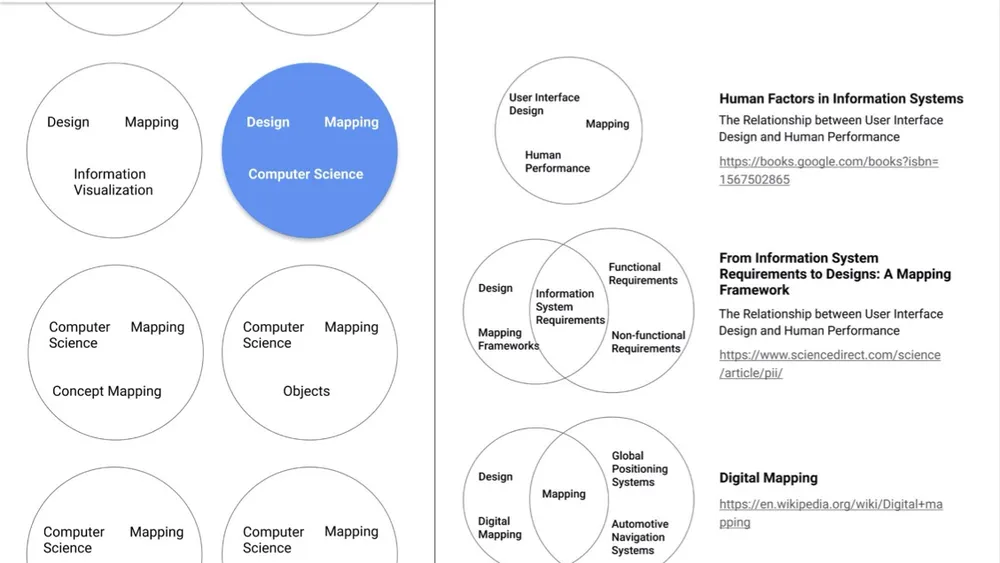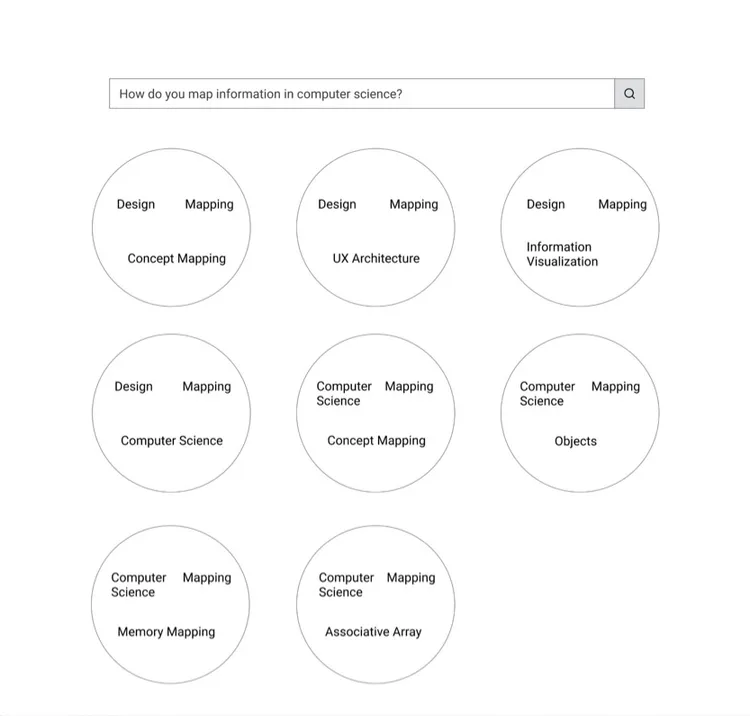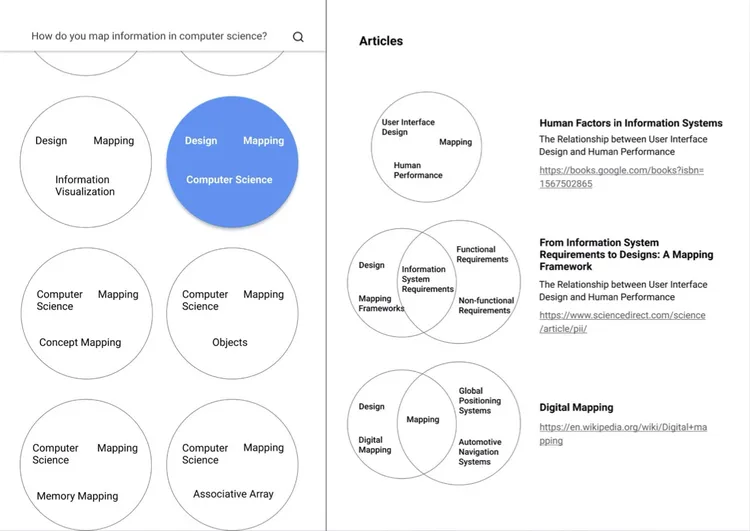CDH at ACH2021: Gissoo Doroudian Introduces Bona Fide
5 August 2021
Doroudian, User Experience Designer at the CDH, delivered a lightning talk on Bona Fide, a project in the concept stage that invites users to think about search engines in a new way. Comments welcome!

Editor’s note: On July 21, CDH User Experience Designer Gissoo Doroudian delivered a lightning talk at the Association of Computers and the Humanities (ACH) Virtual Conference. Doroudian introduced Bona Fide, a project at the concept stage that invites users to think about search engines in a new way. Below is Doroudian’s talk, which has been edited for this blog post.
We invite your feedback! If you have comments or questions, please reach out to Doroudian at gissood@princeton.edu and/or find us on Twitter.
What Is Bona Fide?
Bona Fide is a knowledge constructor. It’s a different way of thinking about search engines, where the focus becomes the conceptual relationships that exist among sets of search results rather than individual results to answer the researcher’s questions.
The question that has been the driving force of Bona Fide is this: When using the search engines of today, how can we form a question about a topic or discipline with which we are unfamiliar? Current search engines work well when we have the language to form a question, but do not empower us to expand our language and broaden our knowledge beyond our disciplines to guide us to ask new questions.
Bona Fide addresses this question by using the concept of entailment mesh by Gordon Pask, which was developed in the 1960s. An entailment mesh is a way of representing knowledge, where three or more unique, distinct words or phrases that can be used to describe a topic are put together. [Note: To learn more about entailment meshes, watch this video by Paul Pangaro and this follow-up video by Pangaro.]
How Does Bona Fide Work?
Start with a question about a topic that you know nothing about. For example, the question—“how do you map information in computer science?”—is a question that I asked a few years ago for my thesis because I needed to know about how computer science approaches information mapping. Coming from a design background, I didn’t know what keywords or what language I needed to use to get to where I wanted.
Rather than a list of articles, as we get with a standard search engine, what we get with Bona Fide is a number of representations of results, each of which is an entailment mesh containing a series of articles. When I know nothing about the space I’m getting into, I prefer to begin by seeing the relationships among topics rather than going straight into an article. With entailment meshes, I have this kind of control. For instance, I can look over the entailment mesh below with “Design, Mapping, and Concept Mapping,” and the two entailment meshes after that, and recognize what each of the terms means and how they might be related.

However, when I look at the entailment mesh with “Design, Mapping, and Computer Science” on the second line I start to feel uncertain and uncomfortable. This is because at this point I understand what each word means but I don’t know what they mean together and how they are related. In the entailment meshes that appear later, I don’t even know what some of the words mean. Therefore, to learn more about my question and to dive deeper to explore the topic, the entailment mesh with “Design, Mapping, and Computer Science” appears to be the most appropriate because it’s where I understand some things but not everything.

After I select the appropriate entailment mesh as mentioned earlier, I am shown a list of articles that fit into this larger relationship. In the world of Bona Fide, each article is also represented with one or more entailment meshes because entailment meshes are a consistent and cohesive way of describing what each body of text is focusing on. This is the idea of Bona Fide.
What’s Ahead?
Some of the things I’m thinking about for the future involve exploring new ways that a new entailment mesh would be formed for an article or sets of articles, how new articles would be added into existing entailment meshes, exploring ideas for the user interface, and, more widely, the ability to let users easily control when they want or do not want to utilize the data in their search history to improve their search experience.
Do not hesitate to get in touch at gissood@princeton.edu if you are interested in this project!
Next week, we’ll share the group’s presentation on Startwords, the CDH’s forum for experimental scholarship in the humanities.